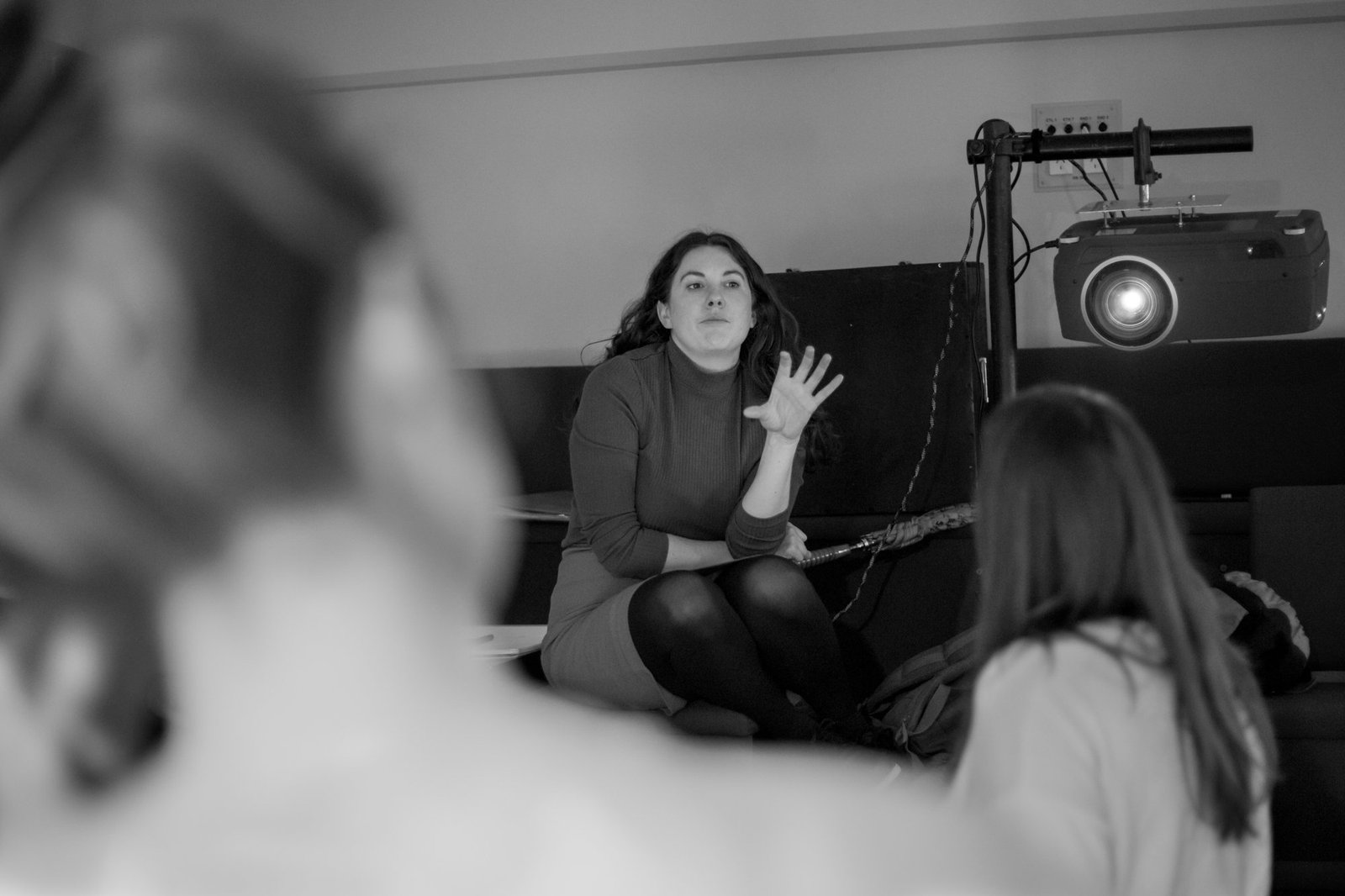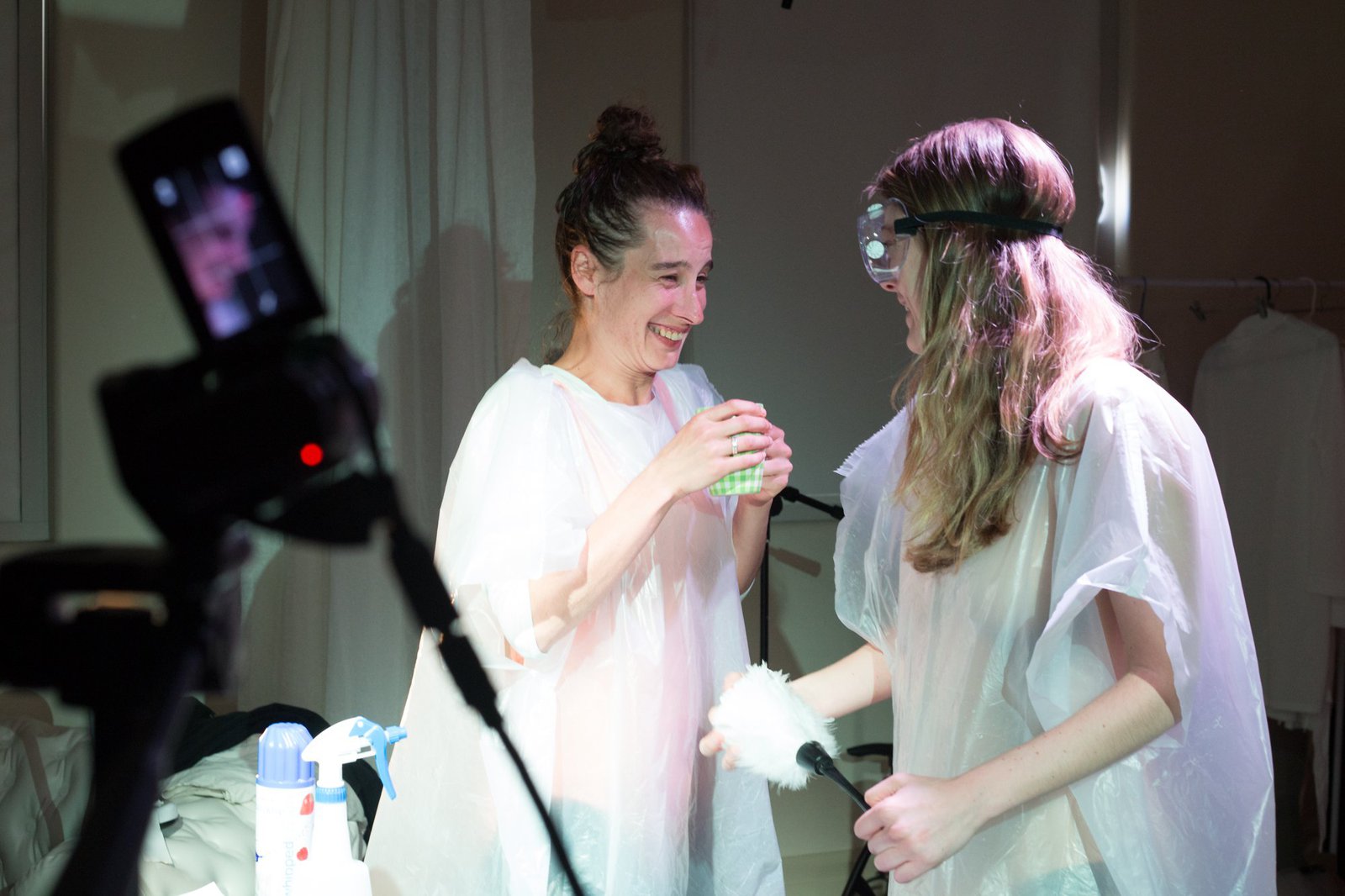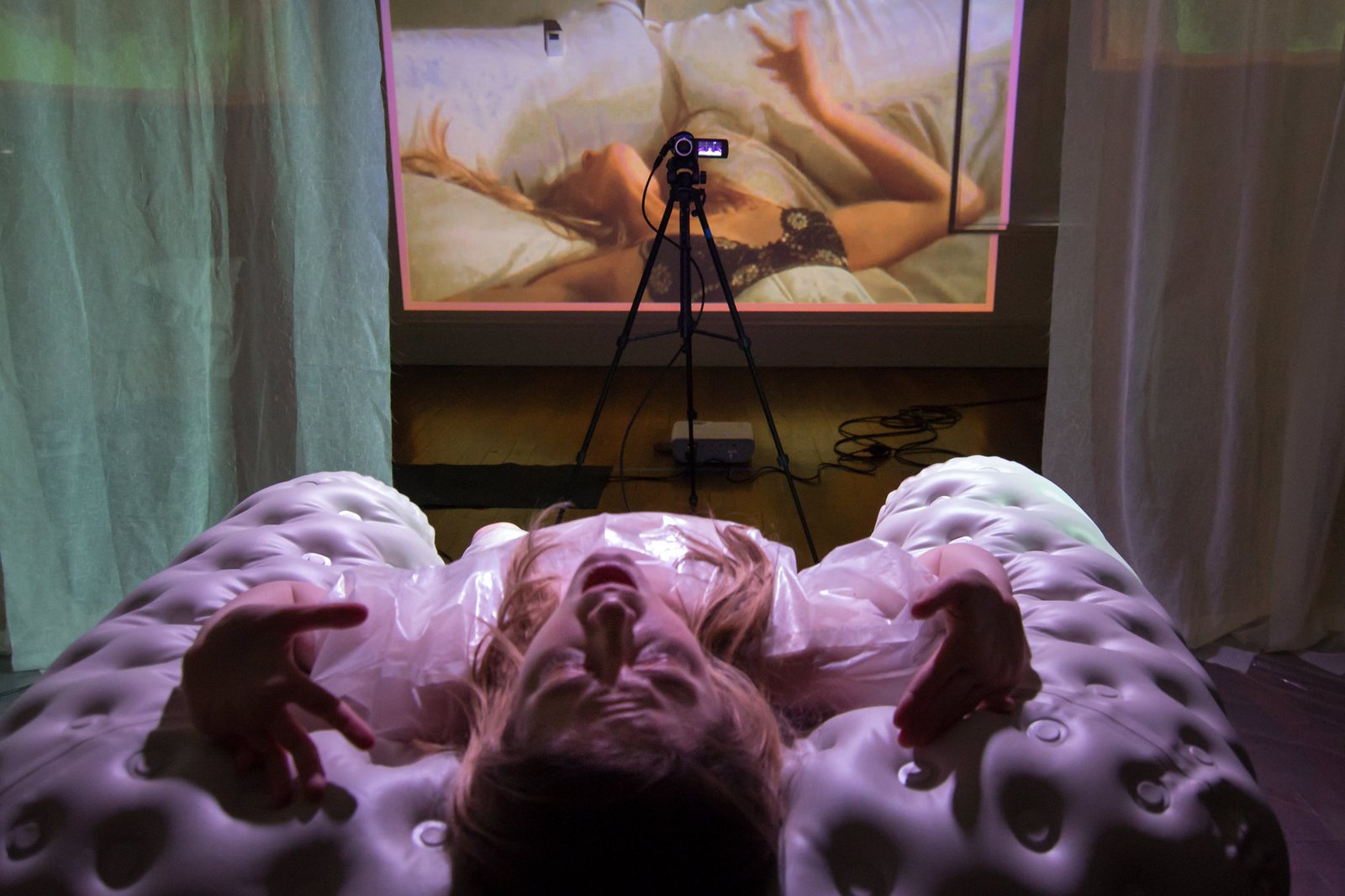3 November 2017
Director Eleanor Bishop and actors Karin McCracken and Julia Croft lift the veil on the inspiration behind their sexy, often subversive new play Body Double, which runs at BATS in Wellington this month.
 Andi Crown Photography
Andi Crown Photography
Body Double is presented by Zanetti Productions and runs 10–25 November at BATS Theatre. Book at BATS or phone (04) 802 4175.
Eleanor Bishop
My inspiration? Peggy Orenstein’s Girls and Sex and The Builders Association.
Peggy has been tracing feminism through the growth of her daughter. Her first book explored the princess industrial complex and now she turns her eye to how young women are having sex, at high school and college level. Girls and Sex probes why our generation of young women have high expectations of equality for our professional lives, but low expectations for our sex lives. She takes particular issue with our image-saturated culture in which the constant objectification of women confuses us into thinking that “looking” sexy is a substitute for “feeling” pleasure. I read this book after I’d been touring around college campuses in the States with my piece on rape culture, Jane Doe, and it reiterated many of my own anecdotal findings from having interviewed about 65 college students at that point. It helped me find the language to articulate why a theatrical conversation around pleasure and desire was so necessary in this moment. Hence: Body Double.
I first saw The Builders Association in the 2006 New Zealand Festival with their piece Super Vision, a large-scale multimedia work about surveillance culture (surprisingly prescient). In 2013, I went to Carnegie Mellon University and was lucky enough to study with Marianne Weems, Artistic Director of The Builders, seeking new theatrical languages to talk about the epic social and political issues of our time. I’ve gone on to assistant direct for the company and am thrilled to be bringing to our production of Body Double something of their mix of documentary and classic material, and interior landscapes saturated in media and popular culture.
 Director Eleanor Bishop
Director Eleanor Bishop
Credit: Tabitha Arthur
Karin McCracken
My inspiration? Palmyra and Her Body and Other Parties.
I've been thinking a lot about Palmyra, an experimental piece of theatre from the UK company FellSwoop Theatre. I caught the show at Edinburgh Fringe this year and was really stunned by it: their use of metaphor was clean, (looked) simple and incredibly elegant. The relationship between the two performers was constantly ambiguous – which successfully undermined my desire to cast a “bad guy”. The power dynamic between the two was so well rendered that even the hint of violence between them felt monumental. I burst into tears at the final stage picture, which is, in this case, a good thing.
I’m reading Carmen Maria Machado’s collection of short stories, Her Body and Other Parties, at the moment and it’s very present in my mind when I’m working. The stories meditate on the lives of women in a frame that dips into fable, or even magic realism – I get a (little) taste of Gabriel Garcia Marquez and Italo Calvino when reading her. The collection is feminist, sometimes tough to read, but most of all incisive, especially when it’s playing with fantasy and fairy tales. It’s making me think about the re-authoring of traditions (literary, theatrical, all kinds) by women, and how utterly gratifying it is to see.
 Julia and Karin rehearse Body Double
Julia and Karin rehearse Body Double
Credit: Tabitha Arthur
Julia Croft
My inspiration? Mattress Performance (Carry that Weight) and Carolee Schneemann.
Almost the perfect work of art! Mattress Performance (Carry that Weight) was a durational art piece performed by Emma Sulkowicz from September 2014 to May 2015 at Columbia University. Sulkowicz carried a mattress everywhere to protest the fact that her rapist had not been expelled from the University. I find this work insanely moving and so very, very inspiring. This image of a woman constantly carrying a heavy mattress contains infinite threads of meaning so deep that I can’t really articulate them, but man do I feel them. She condensed story, sadness, grief, burden, politics, activism, anger and beauty into one simple action. The specificity of this action changed the way I see imagery in performance. At its best, an image is a container for things that there are no words for. It can surpass your logical brain and hit you somewhere directly in your body. I can feel this image in my body in a very real way. And anger can be made into something fucking beautiful.
The legacy of Carolee Schneemann and her work influences all of my practice and hopefully all of my life. She is one of my role models for what it is to be a creative woman in this world. Her voice is big, bold, loud, unapologetic, courageous, angry and beautiful and her work is filled with joyful abandon; Meat Joy (1964) in particular is this wild, anarchic, primal celebration of sexuality. Naked bodies, wet paint, raw fish and raw chicken. That’s art right?
Body Double is the BATS 2017 STAB Commission, supported by Creative New Zealand.
 Scene from Body Double
Scene from Body Double
Credit: Tabitha Arthur


